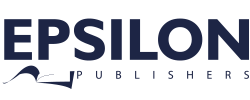The power of financial literacy in sustainable development
Financial literacy is a key driver of sustainable development, enabling individuals and communities to make informed financial decisions, spend wisely, and access greater opportunities. This is particularly crucial for women and marginalised groups, who often face financial exclusion. Societies can build a more sustainable and resilient future by integrating financial education into policies and programmes. It is crucial to understand that investing in financial literacy is more than enhancing individual financial well-being. It is a vital step toward fostering economic resilience, promoting sustainable consumption, and bridging financial gaps that hinder equitable development.
One of the most significant benefits of financial literacy is its role in economic empowerment, especially for marginalised communities. Understanding budgeting, saving, and investment strategies allows individuals to improve their financial stability and contribute to local economies. For instance, microfinance initiatives providing small loans to individuals and entrepreneurs demonstrate how financial literacy drives sustainability. When people manage these funds responsibly, they can invest in businesses, generate employment opportunities, and reduce poverty. Wealth-building strategies, such as long-term savings and responsible credit use, help communities achieve economic self-sufficiency, strengthening local economies and enhancing resilience.
Financial literacy is also crucial in promoting sustainable consumption and environmentally conscious decision-making. When individuals and businesses recognise the economic benefits of sustainability, they are more likely to adopt eco-friendly practices. Financially literate consumers tend to invest in energy-efficient appliances, sustainable products, and green technologies, choices that align with global goals for responsible consumption and climate action. Likewise, businesses that understand cost-effective sustainability strategies can implement environmentally friendly practices, such as reducing packaging waste, sourcing ethical materials, and optimising energy use. These actions contribute to a more sustainable economy while lowering carbon footprints.
Women worldwide often encounter financial barriers that limit their ability to participate fully in economic activities. Financial literacy is a powerful tool in bridging this gap, equipping women with the knowledge and confidence to manage personal finances, launch businesses, and advocate for economic equity. When women are financially empowered, entire communities benefit. Women-led businesses stimulate local economies, create job opportunities, and drive sustainable development. Furthermore, educating women about financial management enables them to make informed decisions regarding household spending, healthcare, and education, which significantly improves overall community well-being.
To ensure financial literacy reaches those who need it most, we must create publications that marginalised groups can easily understand, learn from, and apply in their daily lives. Many existing financial resources are overly complex, using technical language that makes them inaccessible to individuals with limited education or financial experience. Simplified, accessible publications can bridge this gap, making financial knowledge more inclusive. When marginalised individuals learn to budget, save, invest, and manage debt effectively, they gain greater control over their financial futures, reducing poverty and dependency. Moreover, clear and practical financial education allows disadvantaged groups to participate more fully in the economy. By helping individuals break free from cycles of poverty, these resources transform personal financial outcomes and strengthen entire communities.
Publications tailored for marginalised groups should include real-life examples, step-by-step guidance, and actionable advice, enabling readers to apply what they learn immediately. With widespread financial literacy, businesses can thrive, job opportunities increase, and economies become more stable and equitable. Investing in accessible financial education is an essential step toward building a stronger, more inclusive, and sustainable world.



